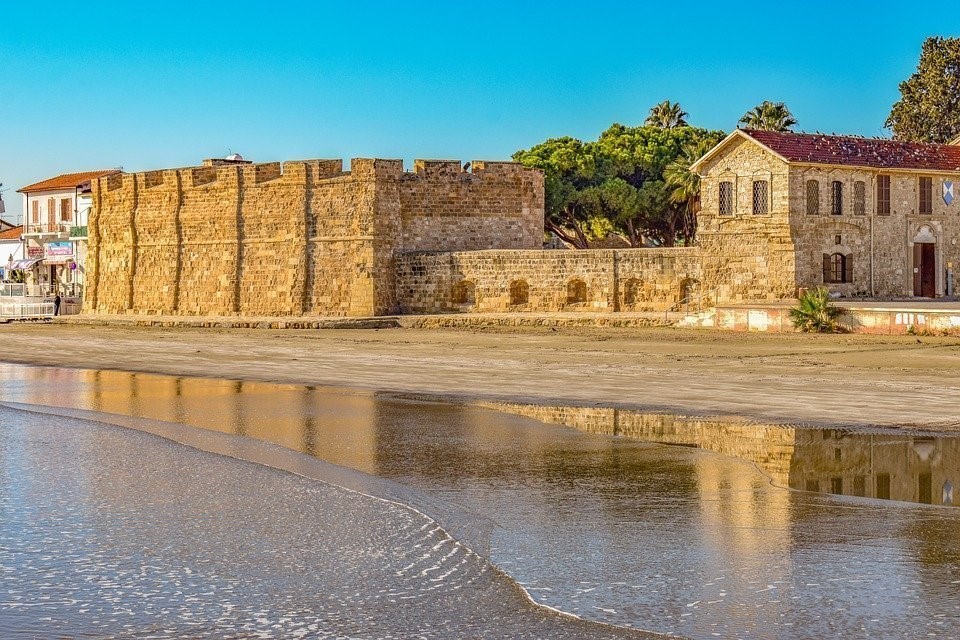The city of Larnaka (also called Larnaka) is one of the oldest cities in Cyprus, with finds from the 13th century BC. A city with significant historical and geographical value, a point of reference and a place laid clame to by the powerful people of the time.
In ancient times, the city of Larnaka was called Kition and was a focal point for the conquerors of the time. The story of King Kimon is remarkable, where he died while besieging the city from the sea when it was under Phoenician domination. King Kimon demanded that his associates not disclose his death in order to keep morale high among the allies, resulting in the attack of the Phoenicians and ensuing victory of the naval battle. Larnaca city was destroyed in 77 AD by a mighty earthquake. Following the earthquake, a complete reconstruction of the city commenced.
Today, Larnaka is a beautiful city with rapid growth. Since 1974, the country’s main airport is in the city of Larnaka, making it a great hub for travel to the Middle East. For most visitors, the main tourist attractions here all revolve around sun, sea, and sand with many seaside activities on offer on the beachfront, as well as shops, outdoor restaurants and kebab vendors.
If you are a history fanatic, there are many museums and sites to be toured such as the monastery Stavrovouni, the earliest documented monastery on the island, the Ancient Kition, a collection of ancient temples built around 13th Century BC, or the Larnaca Fort close to the beachfront historically a prison, it has been converted into a small archaeological museum with finds from all over Cyprus.
Generally, Larnaca is an easygoing place with a distinctive, laid-back vibe combining tourist, historical and traditional attractions throughout the region.
Begin your exploring by considering the following list of attractions and things to do in Larnaca and you will definitely enjoy your stay!!!
Ayios Lazarus – Church Of Saint Lazarus

Lazarus, raised by Jesus from the dead, was consecrated Bishop of Kition. This beautiful Byzantine church was built here in the ninth century to house the tomb of the saint. The church is quietly grand, it’s atmosphere quietly mystic. Despite its small size, its startling features stand out proudly when you’re close. Don’t forget to go below and chack out the actual tomb of Lazarus!!
Larnaca Castle Fort And Museum
At the southern end of the Foinikoudes Promenade lies one of Larnaca’s most historically important buildings. Originally just a small fortification, a proper castle was built up here in the late Medieval Age, slowly falling to disuse over the years. The Ottomans, the British and the Germans have all claimed some use of it, usually as a war prison and execution ground. Since then it has been transformed into a museum containing relics of Early Christian and Byzantine heritage as well as tools, utensils and weapons from other stages of Cypriotic history.
Hala Sultan Tekke

You wouldn’t expect a place like this to be one of the most important sites in Muslim history, but there you go. Umm Haram, foster mother of the Prophet Muhammad, died and was buried here. Surrounded by a beautiful park, the mosque itself is tranquil. No single religious movement oversees this place now, but it’s a religious place nevertheless. They say it’s the fourth most important historical site to Islam.
Ancient Kition

A series of steady excavations over a hundred years starting in the nineteenth century revealed these ruins that date from the 13th Century BC. Kition seems to have been an important site of religious worship and human habitation. Copper smelting was an important industry at the time and Kition might have been a hotspot for it. Following the Mycenean Achaeans, the Phoenicians took over the place are said to have built a magnificent temple to Astarte sometime around 850BC, but this too was destroyed five hundred years later.
Larnaca Salt Lake

You know a place is worth visiting when it boasts a legend of it’s own. It’s said that once when Lazarus asked an old woman here for refreshments, she refused and gave the lie of her vines having all dried up. Lazarus cursed her to forevermore suffer dry vines and a salty water. Today, the lake is a major bird conservatory and migratory stop. It’s truly magnificent in the winter when thousands of pink flamingos flock here to mate. These beautiful and graceful birds are a photographer’s delight. The area surrounding the lake is beautiful, and the Hala Sultan Tekke is right next door.
Finikoudes Beach And Promenade

This beach is considered as one of the famous beaches in South Cyprus and has gained its name from the small palm trees that were planted over here, back in 1922. The striking feature of the beach is its cleanliness. You can walk along the beach in the morning or take sunbath, go for lunch in any of the local restaurants located on the beach and do shopping in the afternoon, near to the beach.
Camel Park Mazotos

A beautiful camel park, founded in 1998, offers some of the best adventurous trips to its visitors. This park is located in the countryside of Mazotos village, which is just 15 minutes driving distance away from Larnaca.
Lefkara Village

The villages surrounding Larnaca are some of the best places to visit if you want to get a feel for traditional Cypriot life.
Famous for its lace production, the village of Lefkara, is a delightful place to explore, full of wonderfully preserved mansion architecture, quaint cafés, and a bundle of lace shops where local women sit in the sun outside creating new lace pieces for sale.
Stavrovouni Monastary

Perched grandly atop a mountain is one of Christianity’s most important destinations. The monastery was founded by St. Helena, mother of Byzantine Emperor Constantine the Great, who built it to mark the Holy Cross buried there. The monastery is perhaps the first that was ever built on Cyprus. The Holy Cross that was supposedly housed here has vanished – it is feared that one of the many invaders that attacked the island over the centuries made away with it, but even that is uncertain. The monasteries’ beautiful icons and frescoes have been lovingly restored.
Wreck Of The Zenobia

Nothing quite thrills like the words “diving to a sunken wreck”. Though not exactly a cache of hidden treasure, the Zenobia, which sank in 1980 has become one of the top wreck diving destinations of the world. The wreck provides dive explorations for all levels of divers with newly PADI qualified divers able to dive down to the starboard side of the ship, while more experienced divers can dive lower, down to the car decks, and enter the innards of the ship.
All dive companies in town offer Zenobia diving trips!!



